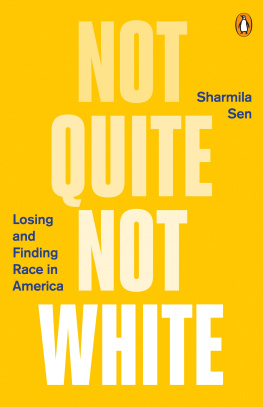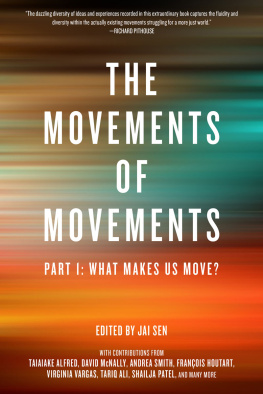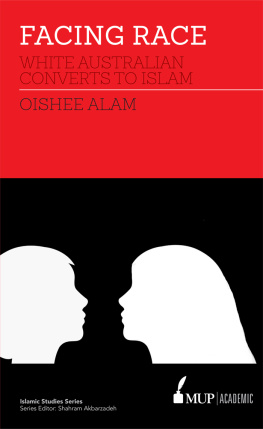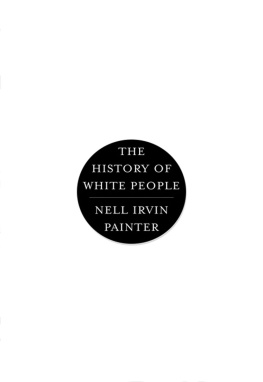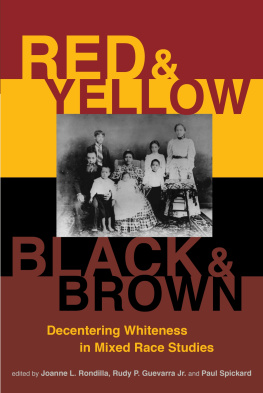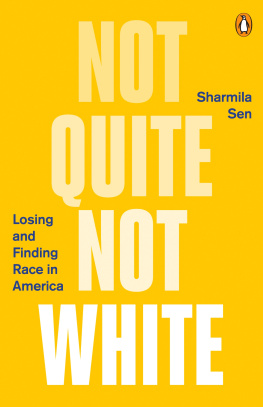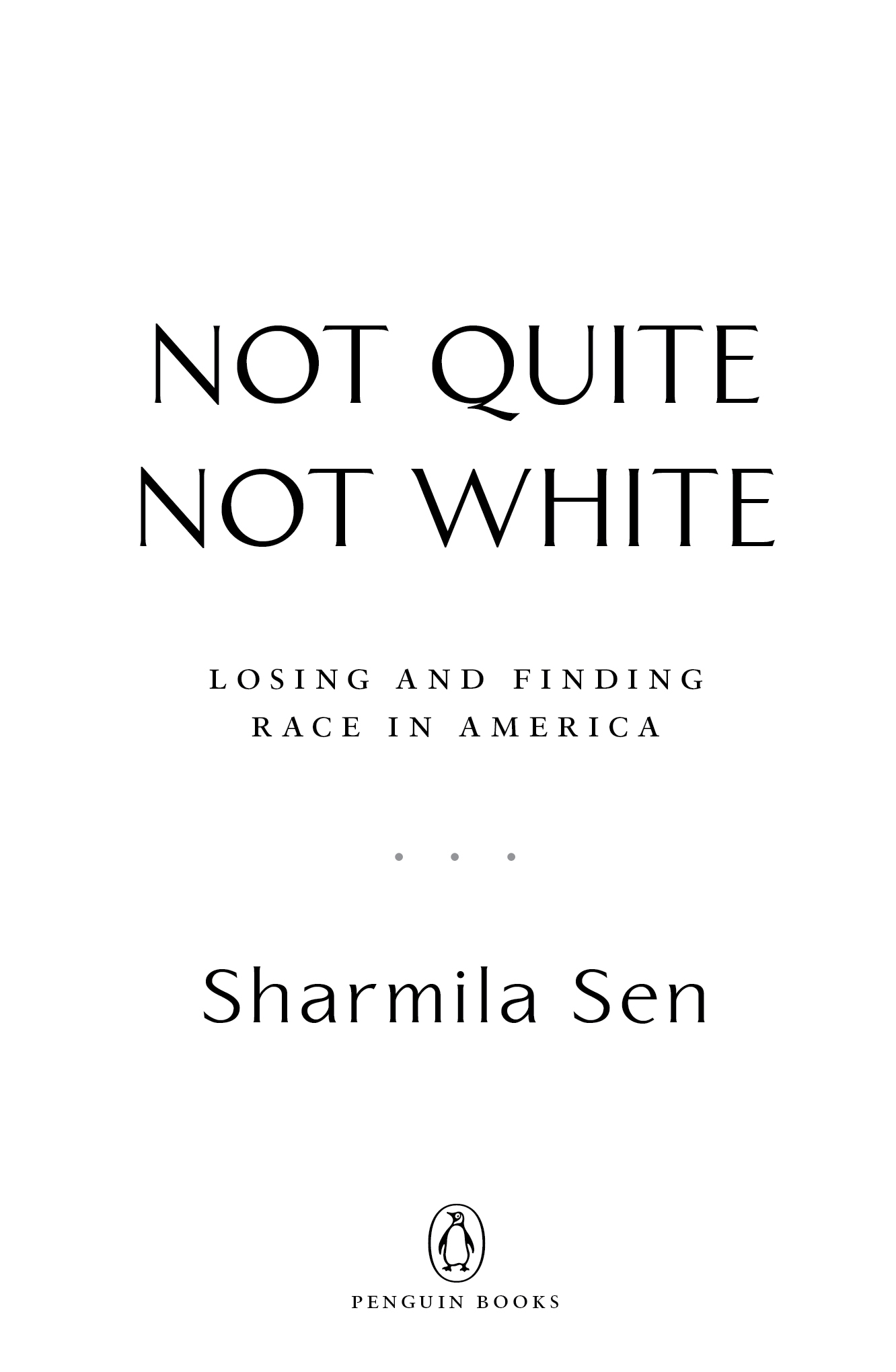PENGUIN BOOKS
NOT QUITE NOT WHITE
Sharmila Sen grew up in Calcutta, India, and immigrated to the United States when she was twelve. She was educated in the public schools of Cambridge, Massachusetts, and received her AB from Harvard and her PhD from Yale in English literature. As an assistant professor at Harvard she taught courses on literature from Africa, Asia, and the Caribbean for seven years. Currently, she is executive editor-at-large at Harvard University Press. Sharmila has lived and worked in India, Pakistan, and Bangladesh. She has lectured around the world on postcolonial literature and culture and published essays on racism and immigration. Sharmila resides in Cambridge, Massachusetts, with her architect husband and their three children.
PENGUIN BOOKS
An imprint of Penguin Random House LLC
375 Hudson Street
New York, New York 10014
penguinrandomhouse.com
Copyright 2018 by Sharmila Sen
Penguin supports copyright. Copyright fuels creativity, encourages diverse voices, promotes free speech, and creates a vibrant culture. Thank you for buying an authorized edition of this book and for complying with copyright laws by not reproducing, scanning, or distributing any part of it in any form without permission. You are supporting writers and allowing
Penguin to continue to publish books for every reader.
LIBRARY OF CONGRESS CATALOGING-I N-PUBLICATION DATA
Names: Sen, Sharmila, author.
Title: Not quite not white : losing and finding race in America / Sharmila Sen.
Description: New York, New York : Penguin Books, 2018.
Identifiers: LCCN 2017031011 (print) | LCCN 2017032252 (ebook) | ISBN 9781524705121 (ebook) | ISBN 9780143131380
Subjects: LCSH: Sen, Sharmila, author. | South Asian AmericansBiography. | South Asian AmericansSocial conditions. | South Asian AmericansEthnic identity. | South Asian AmericansHistory. | RacismUnited States. | Group identityUnited States. | United StatesRace relations.
Classification: LCC E184.S69 (ebook) | LCC E184.S69 S46 2018 (print) | DDC 305.800973dc23
LC record available at https://lccn.loc.gov/2017031011
Penguin is committed to publishing works of quality and integrity. In that spirit, we are proud to offer this book to our readers; however, the story, the experiences, and the words are the authors alone.
Cover design: Oliver Munday
Version_1
For Ishani, Milan, and Kabir
CONTENTS
Preface
The Mask That Grins
When I was in graduate school at Yale University over twenty years ago, I once asked a friend of mine why everyone always gravitated toward us two at student parties. My friend was one of the few black doctoral candidates in the university at the time. Finding ourselves to be the only minority students in a great many of the seminars we attended, we often joked with each other privately about race and identity as a way of blowing off some steam. I recollect that particular conversationwords whispered over plastic cups in a crowded roomwell. With each passing year, our playful exchange has taken on Technicolor oracular tones in my mind:
I hear my friend say: Sharmila, do I really have to explain why everyone comes and hangs out with us at parties? Because we are fun. Because we smile and laugh so much.
Why do we smile so much? I ask him. My cheeks hurt from smiling so much and I cannot keep it up.
We smile, he tells me, because it is the only face we can show. If we stop smiling, they will see how angry we are. And no one likes an angry black man. Or an angry brown woman, I add, silently editing our conversation. But I think you know this already, he continues, and so you smile wide and crack all those jokes.
At the end of the nineteenth century, the African American poet Paul Laurence Dunbar wrote,
We wear the mask that grins and lies,
It hides our cheeks and shades our eyes
In the early decades of the twenty-first century, I know that if I stop grinning, I will frighten others with my anger. Anger is the useless emotion of people with grievances. Civilized people, superior people, capable people manage anger through reason, televised town hall meetings, logic gates, strategic planning, branding exercises, op-eds, and fireside chats with tea and sherry.
In the universities of America today there are angry students who say that when people of paler complexions use pigments to darken their faces and redden their lips for Halloween, when people with blond straight hair wear dark curly wigs in order to dress as a rapper, they are insulting black people. Dont curb our freedom and be a killjoy who doesnt understand that Halloween is about experimentation, say their opponents. Children, do you want adults to tell you how to dress? Do you want to whine about microaggressions and institutionalized racism? Remember, out there in the real world, outside college, no one will give you trigger warnings in a boardroom meeting. Those who think angry students of color are pampered minorities continue, Institutionalized racism is a figment of your imagination. This is the reign of emancipation. Jim Crow is a chapter in the history books. The empire has folded up its flags and bid farewell to the natives. Stop complaining, pull up your pants, and learn to have a little fun. We cannot go around changing names of buildings just because the name happens to belong to a white man who owned slaves. Think of all the good qualities the slave owner had. Think of all the wondrous things he did for this country.
Whats wrong with a little racial ventriloquism? Race is just performance. Race is a metaphor. Race is a biological fiction. Let us perform our identities. (These are the graduate-school-educated voices of America.) Whats wrong with having a little fun? (These are teenage voices in America.) Parading in blackface is our cultural heritage. We will fight to protect our heritage. (That is Dutch people parading as Zwarte Piet, or Black Pete, on Saint Nicholass Day.) These voices, I wager, are mostly white.
Why do blackface and brownface bother me? Because I have been wearing whiteface for so long. Because my Halloween never ends. The tricks and the treats are not toilet paper and cheap candy. The truth is that the opposite of blackface is not whiteface. Blackface is jolly, makes fun of others, is entertainment, is a game you get to play when you are already the winner. Whiteface is sad, demeans me, is deadly serious, is a game we play when we know we are on the losing team.
Blackface makes me angry because whiteface is not its opposite. And anger is no longer a heroic emotion. The age of Achilles is over. Gods and heroes no longer rage as the topless towers of Ilium burn. Now anger is a Third World emotion. Anger is a militant black. Anger is a shrill woman. Anger is a jihadi. Because we know this, many of us also hide our anger behind elaborate masks of comedy.
At Yale, I learned that all binaries are false. That race is a biological lie. That the colonizer never fully dominates. That the colonized are never fully subjugated. That there are things called Ambiguity, Ambivalence, Aporia. And those were just the A words. There were also Hybridities, Problematics, and we had to Complicate Things. Outside class, there were people whose cheeks hurt from smiling because they feared the consequences of revealing their anger. Perhaps because we perfected our smiles, students young enough to be my daughters and sons have to be seen raging on YouTube.

